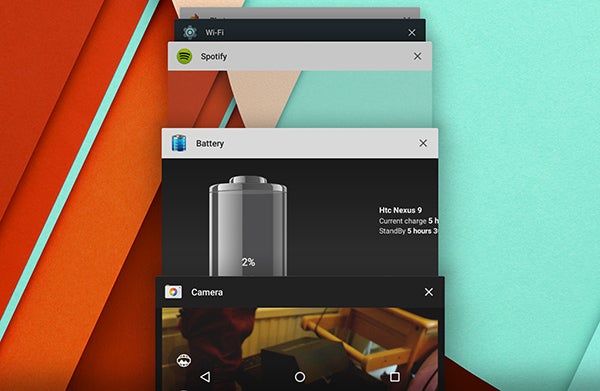Android 5.0 Lollipop Review
Android 5.0 Lollipop Review
The future of Android is here, but is it exciting?
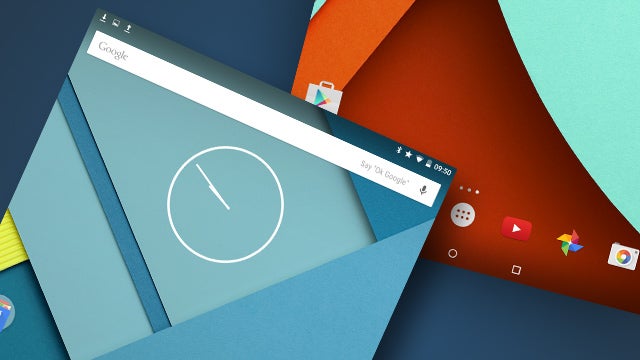
Verdict
Pros
- Clean, accessible look
- Handy lock screen notifications
- 64-bit support is important for the future
Cons
- No clear day-to-day performance boost yet
Key Specifications
- Material design
- 64-bit native support
- Lock screen notifications
Originally reviewed on 12 November 2014
What is Android 5.0 Lollipop?
Android 5.0 Lollipop is Google’s latest big update of its mobile operating system. It succeeds Android 4.4 KitKat and will probably be the last major change we see to the Android OS until well into 2015.
Android Lollipop is the future of Google-powered devices, in other words, but is it worth getting excited about? We’ve been testing Android 5.0 on the Nexus 9 tablet, one of the devices that launched with the software. Here’s why we think it has masses of potential…
SEE ALSO: Android 5.0 Lollipop tips and tricks
Android 5.0 Lollipop – Material Interface
Having used Android 5.0 Lollipop for a while now, we think perhaps the most significant change for now is the way the software looks. Not every change made offers a dramatic shift in the way Android feels, but the design of the interface does.
Google calls this new design ‘Material’, and aside from freshening up the look, it’s meant to add “Responsive, natural motion, realistic lighting and shadows.”
First, let’s take a look at the new design. Here are the home screens:
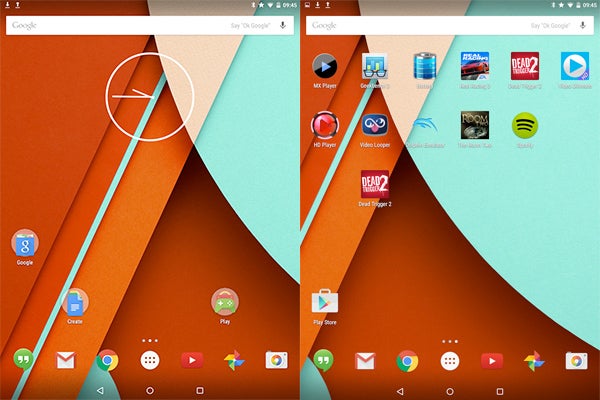
You’ll notice everything is looking familiar, but a little different. Google has redesigned the soft keys – which now have a PlayStation-like flavour – and the Google app icons are different now.
It’s innocuous stuff, but tells you a lot about the aesthetic direction the system is heading in. Android 5.0 Lollipop is all about friendly curves and friendly shapes that have no intrinsic or obvious relationship with technology. They’re a circle, a square and a triangle: you don’t get much more basic than that.
SEE ALSO: Mobile Phone Buyer’s Guide

We assume the idea is that they’re friendly compared with the rather more complicated soft keys of Android 4.4 KitKat. Despite their simplicity, the functions of two are pretty obvious even to relative technophobes.
The triangle already forms an arrow sign, and the circle is just like the Home button on an iPhone. When in doubt, copy Apple. Apple calls the one on the right Overview these days, but it has much the same function as before: it brings up the multi-tasking menu.
The movement of the homescreens has changed. The animations are a bit less severe, with greater variance in their speeds and a greater sense of inertia. Android 5.0 Lollipop is all about shaving off that geeky exterior Android is still seen as having in some quarters.
You’re also likely to see a whole lot of the two headline backgrounds of Android 5.0. These are designed to look as though they’re made from real materials with clever use of textures. Once again, it’s a step away from the sharp technical refinement that has been more a clearer visual feature in previous Android UI elements. These backgrounds are still precise and geometric, but the textures are intended to ground them in the physical, not just digital.
SEE ALSO: iPhone 6 Plus vs Nexus 6
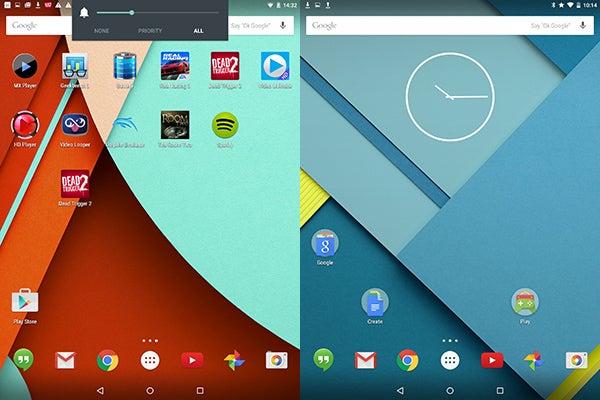
It’s not so much ‘less geek, more chic’, but ‘less geek, more family-friendly’. Its no wonder Google has opted for this style, with tablets such as the TrustedReviews Award-winning Tesco Hudl 2 plugging away at family buyers hard.
Is the new look good? Yes, it’s great. We already liked the Google Now interface used in some Android 4.4 phones, though, including the Nexus 5 and Moto G 2014.
The use of the real-time shadows and lighting promised on Google’s website is pretty subtle, too. Those expecting jaw-dropping visual flashiness may be disappointed by this lack of bravado.
Where you see the these live shadows most obviously is in the multi-tasking menu, which, as usual, is accessed using the right (square) soft key. Multi-tasking has gone 3D, folks, and each pane casts its own shadows. These are ‘design’ shadows rather than realistic ones, mind, and again are pretty diffuse. We like the look.
SEE ALSO: Nexus 9 vs iPad mini 3
Android 5.0 Lollipop – Apps Menu
How about the apps menu? From a basic design perspective it’s very similar to the Google Now interface seen in the Nexus 5. Widgets no longer have a place here – a good move given how little most of us actually fiddle with the things once we’ve discovered a couple we like.
The most obvious difference is that the translucent style of previous versions of Android has been dropped in favour of a simpler, more practical white background. It looks like your apps are being displayed on pieces of plain paper, with a bit of the home screen wallpaper visible around the edges to stop your Android 5.0 apps menus from looking too boring.
SEE ALSO: iPad Air 2 vs Nexus 9
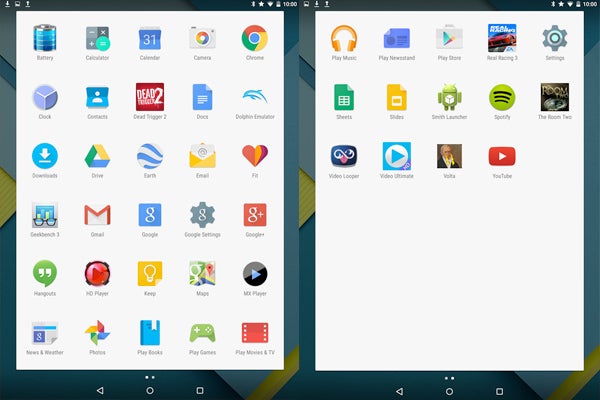
This gets rid of any legibility issues caused by clashing colours between wallpapers and app icons. Android 5.0 Lollipop also seems to darken any white or near-white app icons to make sure there’s still a good amount of contrast for those without 20/20 eyeballs.
At every turn Android Lollipop is out to foster accessibility for an extremely wide audience.
Android 5.0 Lollipop – New Lock Screen
A new look only gets you so far, though. Perhaps our favourite addition to Android 5.0 Lollipop is the new notifications system of the lock screen.
When there are no notifications to see, the lock screen is pretty simple. You get a clock and, if charging, a handy little ticker telling you how long it’ll be until the battery’s full.
Receive a new notifications and they stack up as little white rectangles, not entirely unlike the cards of Google Now. Up to five are shown at once, the rest stacking up underneath. You can open up the lot if you like, without leaving the lock screen.

Tapping one of these notifications naturally takes you to the relevant app – they work just as you’d hope. These kinds of notifications are nothing new, of course, but it’s good to see them so well implemented in the standard version of the system.
It’s also important to note you can disable this feature if you’re worried about people seeing what’s happening on your tablet/phone.
Android 5.0 Lollipop – Feature Toggles
Just as lock screen notifications are things we’ve seen in custom interfaces already, Android 5.0 Lollipop adopts the dropdown home screen menu feature and brightness toggles we’ve seen in other Android phones for ages.
You may not notice it’s there at first, though. As usual, you swipe down from the top of the screen to bring down the standard notifications menu. Then you swipe down again to pull down the feature controls panel.
This panel is non-customisable, but gets you access to most basics:
- Brightness slider
- Wi-Fi toggle
- Bluetooth
- Aeroplane mode
- Auto-rotate
- Flashlight
- Location
- Cast screen (for Chromecast)
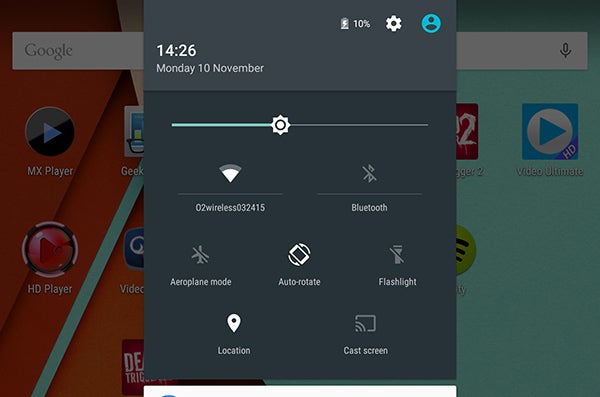
Curiously enough, there’s no silent mode. Instead, pressing the volume buttons brings up a little on-screen menu that lets you choose to silence all notifications – just non-important ones – indefinitely or for a selected number of hours.
We imagine using this might take a bit of getting used to, but it’s a neat idea that might otherwise have been relegated to the Settings menu. It’s basically a Do Not Disturb mode, brought to the surface.
Saying that, there’s also a timed Do Not Disturb feature in Settings that lets you determine hours when only priority contacts can get through.
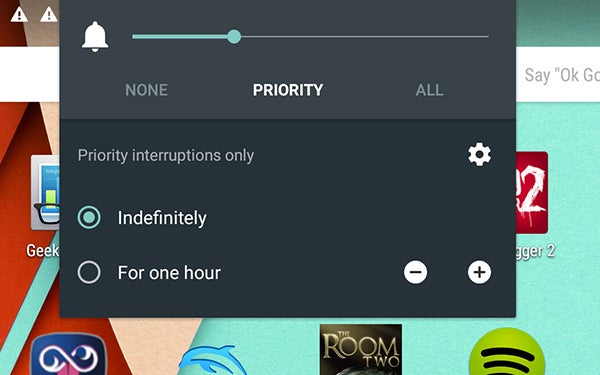
Android 5.0 Lollipop – Gmail and Calendar
Google hasn’t launched any major new services with Android 5.0 Lollipop, but it has given some of the existing ones a bit of an app spruce-up. It’s also the first version of Android to launch with the Google Slides app.
This relatively little-discussed app launched in April 2014, and lets you make Powerpoint-style documents.
You also get the new Google Fit pre-installed. This is Google’s answer to Apple HealthKit, and lets you track your exercise, by either manually inputting it or using compatible health monitors.
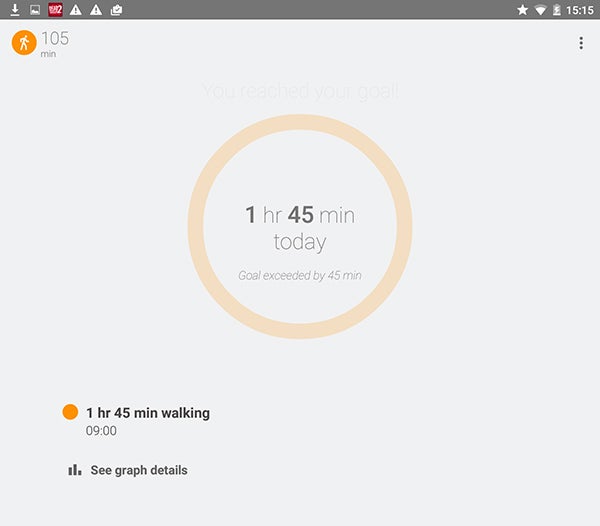
It’s fairly limited, and doesn’t seem to support heart-rate information, just weight and activity. It’s no better than most other tracking apps, and a good deal worse than some. There’s some more work for Google to do here.
Back to the stuff most people will actually use. Google Mail and Calendar have been given a slight revamp in line with Android 5.0 Lollipop’s look, although we should state that at this point Google apps are actually quite separate from the Android system. It’s perfectly possible that you’ll have an Android 5.0 device with an older version of Gmail and co.

Android 5.0 Lollipop – Profiles and Guest Mode
Android tablets have had multiple profiles for a while, but Android 5.0 Lollipop sees the feature come to phones. It lets you setup multiple areas for, most likely, different members of the family, each with access to different apps if necessary.
When you setup these profiles, you can choose whether they have access to a restricted range of apps, or can choose to download and use whatever they like.
There’s also a brand-new Guest mode, which you might want to think of as a temporary profile. This simply loads the apps preinstalled on your device – the Google suite, basically – and gets rid of your account information so people playing with your shiny new phone/tablet won’t stumble onto anything you don’t want them to find. It’s a nice embarrassment-saver.

Android 5.0 Lollipop – Cross-Platform Support
While Android 5.0 Lollipop doesn’t offer particularly jazzed-up fitness features thanks to the currently quite limited Fit app, it does offer improved cross-device interaction. Google says you’ll be able to start something on one device and carry it on with another.
Obvious uses for this include carrying on web searches or watching films when switching between phone and tablet, although devs are sure to come up with some wearable application before too long. We should stress this isn’t a feature we’ve had direct experience of yet because there just aren’t the Android 5.0 devices around at the time of writing.
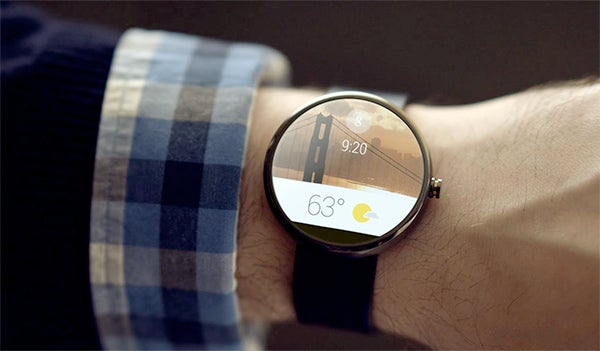
Android 5.0 Lollipop – Performance
Android 5.0 makes some important style changes that should help make at least Nexus devices a mite more attractive for the mainstream buyer. However, for the enthusiasts who regularly read sites like ours, what’s going on in the background is arguably more interesting.
The new software makes a few very important changes, although for the most part they are elements that will affect the future of the system rather than things we can see in action from using a Nexus 9 or Nexus 6.
First, Android 5.0 switches from using the DALVIK runtime to ART. What this means is the way data is compiled to run an app is different, and it’s intended to both speed-up loading apps and switching between them.
Our experiments with switching between ART and DALVIK (you can do it in Android KitKat devices with a simple Settings menu fiddle) show a very slight improvement. However, as the Nexus 9 isn’t actually as slick as we were hoping at launch, there is effectively no performance improvement that you’ll notice in day-to-day use. Android still isn’t as smooth and quick as iOS. We hope this will improve in coming months as we did find performance slightly disappointing.
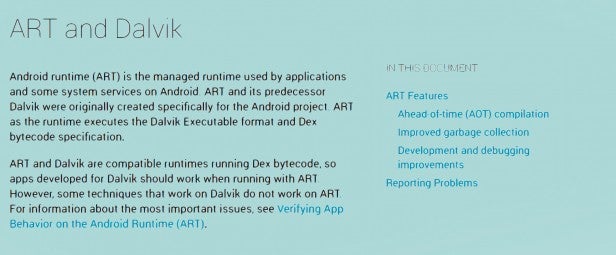
Android 5.0 also offers native support for 64-bit system architectures, which we’re starting to see appear with processors like the Nexus 9’s Nvidia Tegra K1. There’s a perception that 64-bit is only really needed if to bung more than 4GB into a phone, but in fact existing 32-bit architectures can use that – the Snapdragon 805 has a memory address extension that means it can make use of more memory than a ‘standard’ 32-bit system.
The real benefits of 64-bit aren’t that simple. While it also depends on the chipsets themselves, 64-bit architectures open up the possibility for much more data to be juggled at one time. It’s part of the reason why the dual-core chipsets of the iPhone 6 and Nexus 9 are able to offer such power while having just a quarter the number of cores compared to other top-end mobile devices.
Another great sign for the future is native OpenGL 3.1 support. This is the latest version of the graphics standard, and opens-up the possibility for even better graphics in the future for Android games.
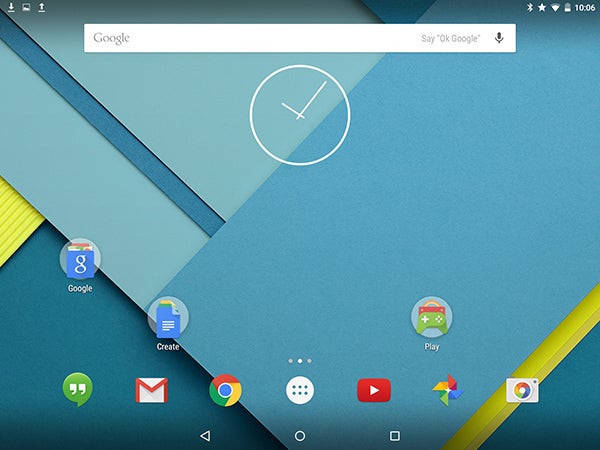
Should I be excited about Android 5.0 Lollipop?
Android 5.0 Lollipop is a big release that means a lot for Google. It’s crucial to the technical development of the platform, especially with it rapidly moving to wearable devices through Android Wear.
However, we’re not convinced anyone chomping at the bit to get an Android 5.0 update is necessarily going to see any dramatic changes unless manufacturers ease off with their own custom interfaces. After all, a great many phones already have the style of custom feature toggles on offer here.
Seen on a Nexus device – or perhaps one of Motorola’s Moto-series ones – Android 5.0 is a solid improvement, if not an essential one.
Next, read our Best Smartphones Round-up or our Best Android Phones Round-up
Verdict
Android 5.0 Lollipop may not mean a great deal to phones with heavily customised interfaces, but it unlocks loads of future potential.
How we test phones
We test every mobile phone we review thoroughly. We use industry standard tests to compare features properly and we use the phone as our main device over the review period. We’ll always tell you what we find and we never, ever, accept money to review a product.


